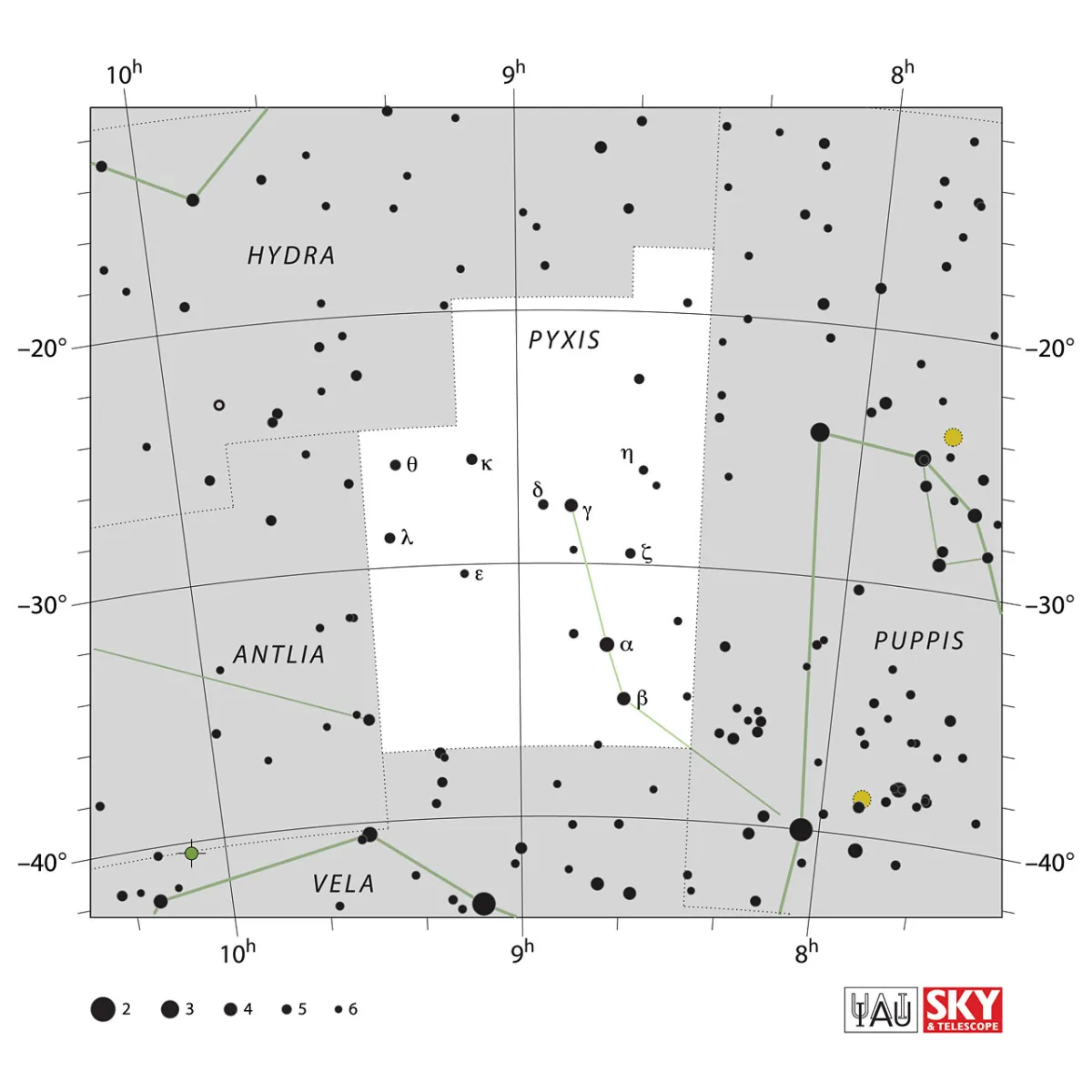Constellation Pyxis (Compass)

Properties
Pyxis is between Antlia> and Puppis, north of Vela. It is an inconspicuous constellation made up of stars of almost 4th magnitude. The area is 221 square degrees and the centre culminates around midnight on February 3rd. [9, 15]
| IAU Name | Pyxis |
| IAU Genitive | Pyxidis |
| IAU Abbr. | Pyx |
| English Name | Compass |
| Culmination at local midnight | 1 February |
| Season (Latitude +0.0°) | October … July |
| Right Ascension (J2000.0) | 08h 26m 43s … 09h 27m 37s |
| Declination (J2000.0) | -37° 17' 31" … -17° 24' 41" |
| Area | 221 deg2 |
| Neighbours (N↻) | Hya, Pup, Vel, Ant |
Deep-Sky Object Descriptions
Catalogues

Mythology and History
Pyxis is the smallest and most inconspicuous part of the original constellation Argo Navis, dissolved in 1752 by Abbé Nicolas Louis de Lacaille. The importance of the magnetic compass needle for seafaring is undisputed, although the Argo Navis certainly did not have a compass on board at the time. Pyxis is the Latin term for can or compass case. [7, 21]